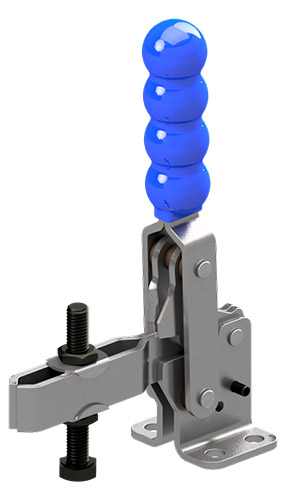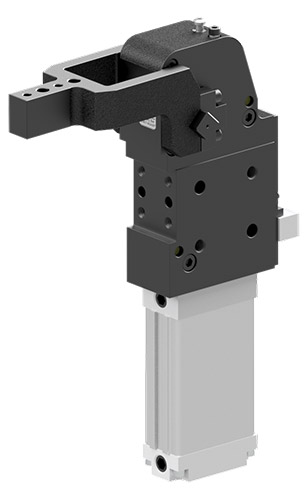Engineering facilities expand at Lancaster University
Business Desk are reporting that Lancaster University is going all-out to expand their engineering department. There’s a fantastic new three storey £17m building on the cards, packed with cutting-edge labs and a 3D lecture theatre specially designed to deliver newly-developed teaching concepts via complex virtual imaging.
The new facility will include a distillation column for chemical engineering, labs for bioengineering and hydrogen energy tech, plus an ‘integrated advanced manufacturing environment’. It’ll also feature new computing design and electronic teaching labs for digital learning. The facilities fully support fabrication and experimental student work, and it’ll be exciting to see what new engineering innovations ultimately come out of it.
Designed by the respected architects Hawkins\Brown, the 2700 sq metre building is designed to become a showcase for contemporary engineering. Work begins during spring 2020 and the build should be complete by summer 2021.
Will the Global Underwater Engineering Hub give the UK’s blue economy a boost?
The Blue Economy encourages better stewardship of our ocean resources. Like the Green Economy, it’s all about creating improvements in human well-being and better social equity, while significantly reducing environmental risks. Britain wants a slice of the pie, and our proposed global underwater engineering hub is seeing some progress right now. It might even actually kick off in 2021. But everything depends on securing the private and public funding needed to build it.
The world’s blue economy is forecast to be worth a whopping £140 billion a year by 2035. No wonder the Aberdeen-based initiative, called Subsea UK, is being seen as ‘critical’ to realising the full potential of the country’s rich energy, defence, aquaculture, subsea mineral and ocean science scene.
Commentators have emphasised the need to get behind the underwater business community and capitalise on the blue economy while being sensitive to the need for minimal carbon emissions. If we want to tap into a bigger share of the pie we’ll need significant investment in technology, innovation and market development from government and industry.
The new hub will connect the UK’s underwater sector, helping British firms swim confidently in emerging markets like offshore renewables and Carbon Capture, Utilisation and Storage (CCUS). It’ll help the country move towards a zero-carbon society, harness maritime resources sustainably, speed the growth of UK businesses, increase exports dramatically, and encourage a flow of new inward investment.
Atacama’s ‘engineering marvel’
At more than 5000m above sea level and far from light pollution, the Chajnantor plateau is lonely, cold and very dark. It is home to an awe-inspiring 66 radio telescopes, each weighing more than 100 tonnes. This is Alma, the Atacama Large Millimetre/Submillimetre Array, and it is the world’s biggest, most costly terrestrial astronomical project.
So far Alma has cost around $1.4bn, funded with the help of European, North American and East Asian partners. The operating budget is an eye-watering $80m a year.
A vast cluster of mobile telescopes surrounded by huge volcanoes and salt flats, visitors require an oxygen mask. This is a vast engineering marvel, and one that’s helping humankind make some extraordinary discoveries. In fact Alma is tasked with uncovering the structure of the universe ‘as far back as you can go’.
In 2019 Alma delivered the world’s first ever photo of a black hole. It marked a thrilling new era for astronomy. The huge optical telescopes have a resolution as much as 10 times more than the Hubble space telescope, only possible thanks to the sheer remoteness, altitude and extreme dry of the Atacama desert, which is ideal for observing cosmic waves.
EVs and AVs – When disruption leads to re-engineering
And Forbes are bringing exciting news that cars will always run on petrol, and people will always drive them. Except we already know that this long-held assumption is wrong. Electric and autonomous vehicles are the future, and they are driving dramatic industry-wide re-engineering.
Call it a revolution if you like. Whatever it is, it’s transforming the transport landscape and reshaping the entire world economy. In fact the autonomous vehicle sector is tipped to generate at least $7 trillion and the electric vehicle market is predicted to reach $567 billion by 2025.
At the same time, significant engineering challenges remain. AVs have to be safe, and they need to drive thousands of miles without a problem. That alone is a huge task. Then we need to look at affordability, reliability and the performance of electric systems in both EVs and AVs.
The key to all this is engineering simulation, a reliable way to overcome tricky tech issues. It cuts the need for expensive road tests and supports positive product development. Simulation fast-tracks research and development, and that means the next few years should see numerous different all-electric vehicles on our roads.
Stainless steel toggle clamps, anyone?
Bowl feeders and latch clamps, toggle latches and power clamps. We do them all… and more. Come back next time for more news from our sector, or give us a call to chat about engineering solutions that keep production lines like yours running smoothly.




